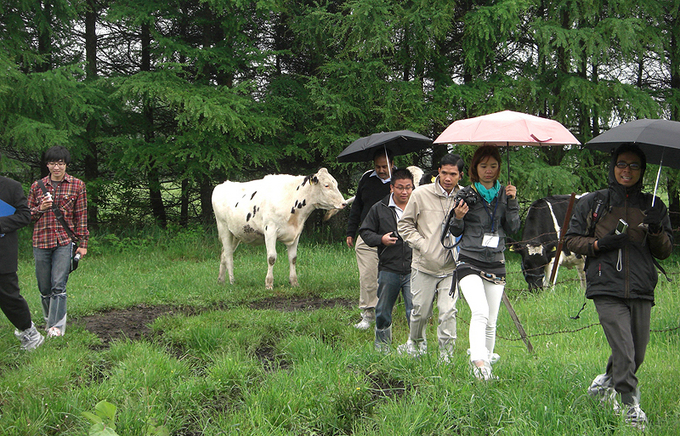Craving for More―Are Japanese People Stricken by an Illness Called Extravagance?
Minako Yofu
Culture and Society Section, Arts and Culture Department
In June 2011, a group of 26 youths from 14 countries and several staff members of the Japan Foundation visited a farming area in east Hokkaido, the northernmost island of Japan, for one week, as part of the Japan-East Asia Network of Exchange for Students and Youths (JENESYS) Program to study food problems. As the ongoing heated debates on Japan's participation in the Trans-Pacific Partnership (TPP) indicate, the agricultural sector is currently being shaken by the trend toward globalization and free trade. By staying at farms in the area, the young participants studied and tried to identify what could the ideal style of agriculture in the coming years.
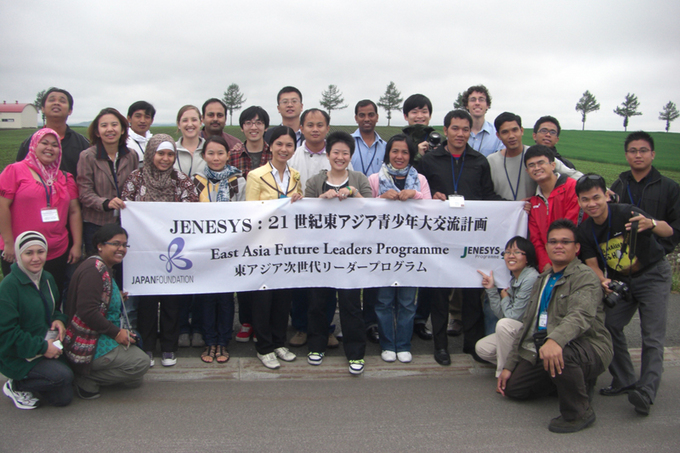
JENESYS participants in Hokkaido
Normally a JENESYS program would have one or two participants from 16 countries comprised of the 15 member countries of the East Asia Summit (EAS) and Japan. But two nations did not take part this time, concerned about the effects of the major earthquake and tsunami that hit the northeast Pacific coast of Japan in March and the resulting destruction of a nuclear power plant. On the other hand, 30 youths in India, one of the member countries, applied to participate in the event and three very promising leaders-to-be were selected to join us. The Indians speak fluent English, and the fact that there were three Indian participants, instead of one or two like the other countries, made them standout in our multiethnic team. Harsh from India was especially active, always voicing her opinions and asking questions, although she had a hard time communicating with us. Indian English was a bit difficult for us, but she was patient and never forgot to smile, even though we kept asking her to repeat what she had said.
The highlight of our trip was a visit to a My-pace Dairy Farming (low input sustainable dairy farming) area spread out around the towns of Betsukai and Nakashibetsu. This farming style adopts a retrogressive method compared with modern farming techniques.
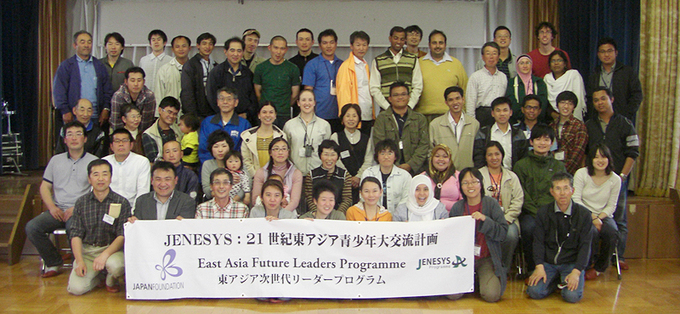
Host families and participants
The participants stayed at 12 families in the area during their visit. When people from different countries stay at local homes, food, along with language, becomes a major challenge because of the dietary restrictions of many of the participants. In order to minimize the task, we had two or three people of the same food orientation stay at one home. Two lucky Indians who were vegetarians stayed at the home of Moriyuki Mitomo, a charismatic dairy farmer who was once featured in a program called Professionals by NHK, Japan's national public broadcaster.
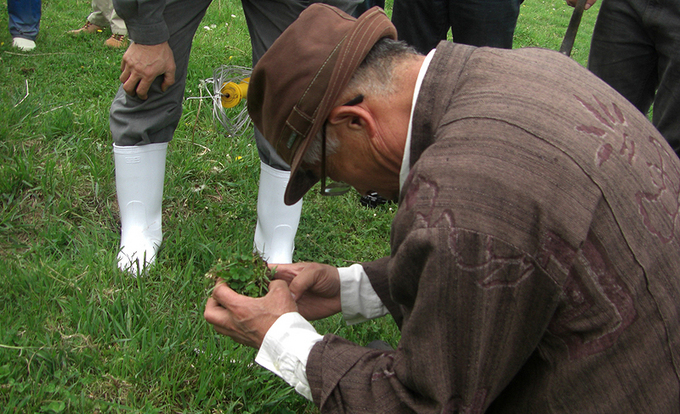
Mitomo checking the soil in the pasture
Our staffers also doubled as interpreters, and because Mitomo's farm was located near our hotel, we often went to see how the two Indians were doing. (Well, the real reason for our visits was to savor Mrs. Mitomo's world-class cheese fondue!)
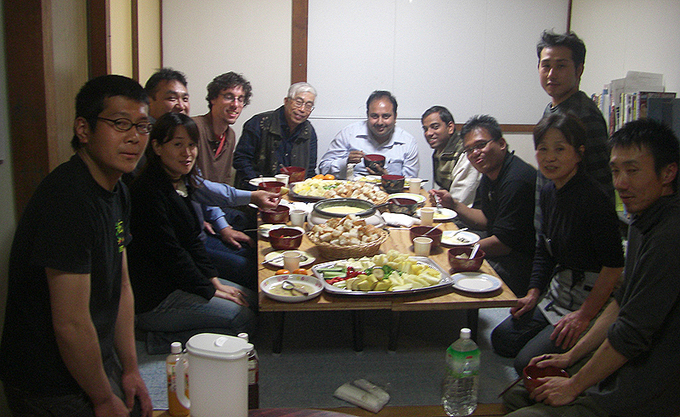
Guest and staffers enjoying a tasty meal prepared by the host family
In the beginning, Mitomo felt he wouldn't need interpreters. He was sure he would be able to manage somehow. But because of the unending discussions about farming carried on between Mitomo and his quests, he acquiesced to our interpretation in the end.
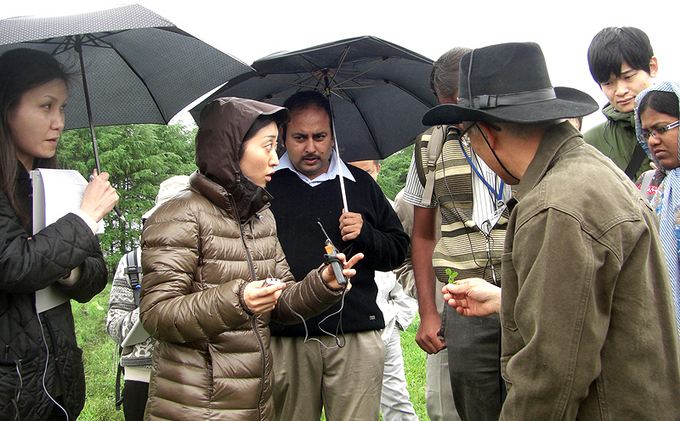
Harsh asking and Mitomo answering questions
Let me introduce some of the conversations that took place, aided by myself and two other staffers.
Harsh: People today want more than they really need. Japanese people import what they don't have and still crave for more. If they took another look at what they have traditionally from ancient times, I'm sure they would realize that they already have enough. Although globalization is progressing, farming deals with products of nature that are native to the land. Farming cannot be uniform because every country is different.
Mitomo: Japanese people worked very hard during the period of economic growth after the war―maybe too hard. We attained what we were aiming for, but we didn't stop. I think our living standard should be what we were aiming for then and that we should try to go back to that level. Trade was originally meant to help each country be economically independent. We must acknowledge our differences and engage in trade for that purpose.
During their stay the participants experienced many aspects of the retrogressive farming method. In My-pace Dairy Farming, droppings are treated and used as manure. We visited a processing plant, and surprisingly, it didn't smell at all. We were also handed a cake of hardened feces, and asked to cut out a piece and check the cow's health by smelling it.
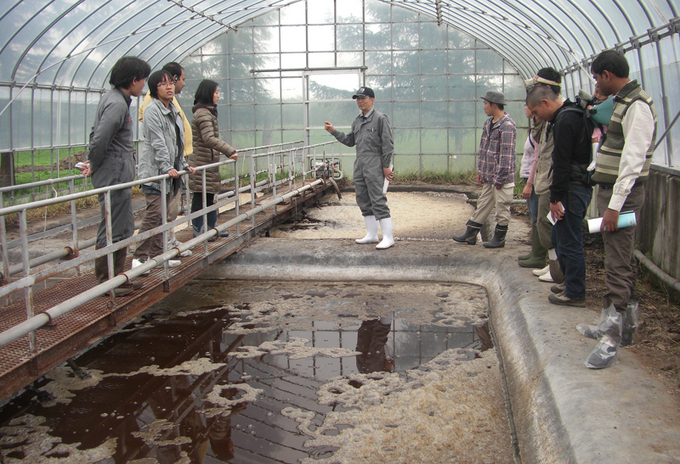
Odorless droppings processing plant at Moritaka Farm
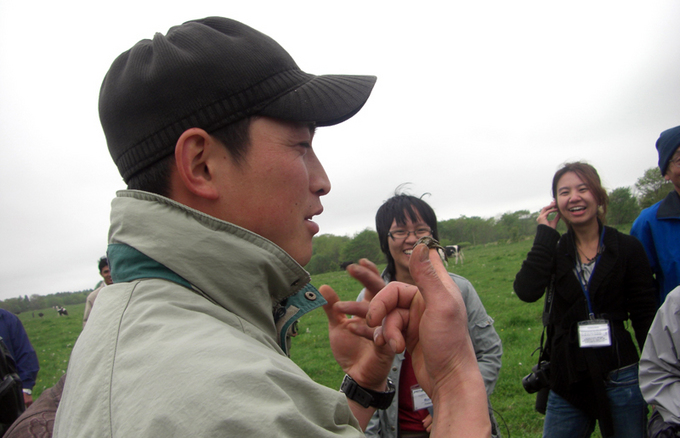
A farmer smelling the droppings in his hand
The farms are run on whatever is available on the land, using the resources to the fullest―imported grain feed is not used here. The people are devoted to building farms native to the region.
Is happiness achieved by spending more and working harder? Are we not already prosperous and happy? True wealth comes from realizing this, being grateful and using to the fullest what we have. If there is something that must be had, then we should cooperate with our neighbors and resort to trade as a measure to compensate for what is missing. Our journey to find the ideal style of farming was actually a trip to find a way of life. It was an opportunity for all of us to rethink "what we already have" and "what are given to us by others."
*The Japan-East Asia Network of Exchange for Students and Youth (JENESYS) Program was announced by former prime minister Shinzo Abe in January 2007 at the Second East Asia Summit. It aims to establish a firm basis for Asian friendship by inviting about 6,000 young people to Japan every year, mainly from the member countries of the East Asia Summit (ASEAN nations, China, Korea, India, Australia, New Zealand) over a five-year period.
Related Events
Back Issues
- 2024.3. 4 Movie Theaters aroun…
- 2023.4.10 The 49th Japan Found…
- 2023.3.28 JF's Initiatives for…
- 2023.1.27 Living Together with…
- 2022.11.16 Inner Diversity <…
- 2022.6.21 The 48th Japan Found…
- 2022.3.22 JF's Initiatives for…
- 2022.3.14 JF's Initiatives for…
- 2022.2.14 JF's Initiatives for…
- 2022.2. 4 JF's Initiatives for…


